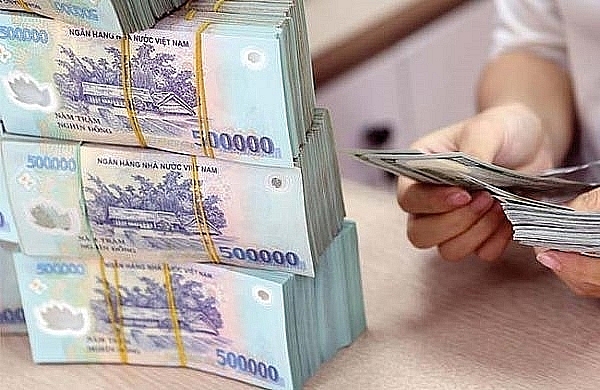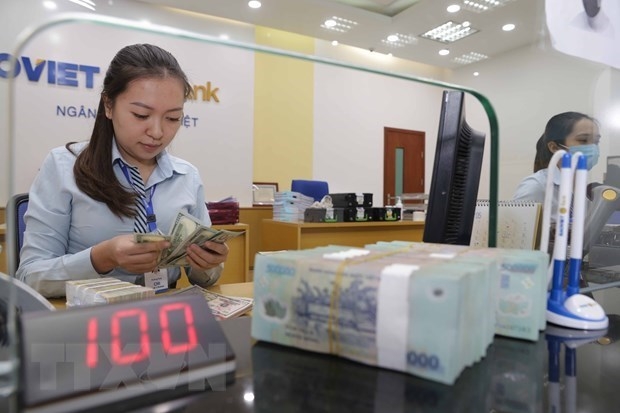According to statistics of the General Department of Customs, in the first nine months of 2022, Vietnam exported about 6.46 million tons of steel, down 34.4% over the same period last year; export value reached 6.5 billion USD, down sharply by 22.6% compared to the same period in 2021. On the other hand, in terms of imports, accumulated in 9 months, the import of finished steel products of all kinds to Vietnam was about 8.93 million tons worth more than $9.56 billion, down 8.3% in volume but up 9.9% in value over the same period in 2021.
Thus, the iron and steel trade deficit has returned to nearly 2.5 million tons after the first 9 months of 2022. But according to steel enterprises, each container of imported raw materials for production is incurring additional costs due to rate increases. This causes prices to increase and profits to fall.
 |
| Nguồn: WB |
Sharing at the Dialogue: “Managing the USD-VND exchange rate: macroeconomic stability” held on November 21, according to Mr Pham Cong Thao, Deputy General Director of Vietnam Steel Corporation, the exchange rate pressure is also one of the important factors affecting the performance of the steel industry. Because steel production materials are mostly imported, when the exchange rate increases, the company’s member businesses increase production costs by several tens of billions of dong. The difficulty is a double whammy when controlling the exchange rate. As a result, Vietnam has no choice but to raise interest rates.
Generally, in the third quarter of 2022, the business results of steel industry enterprises declined significantly. Listed steel manufacturers have recorded a loss of about VND 4,500 billion, mainly due to high inventory costs and exchange rate losses.
Previously, the November macroeconomic update report of the World Bank (WB) stated that by November 2022, VND had lost 9.1% of its value against the USD. Therefore, the World Bank’s experts said that Vietnam’s monetary authority might consider allowing more flexibility in the exchange rate, including allowing the reference rate to rise faster. This measure can be supplemented by maintaining the reference rate, especially if the exchange rate rapidly leads to higher inflation and more inflation expectations. Due to prolonged exchange rate pressure, direct foreign currency sales should be wisely applied to preserve foreign exchange reserves.
However, in the opposite direction, according to economist Dr. Le Xuan Nghia, with the current US inflation situation, the US Federal Reserve (Fed) will gradually reduce the rate of an interest rate increase. Therefore, the reduced pressure of the Fed to raise interest rates, a good increase in disbursed FDI and a surplus of the balance of payments is an opportunity for Vietnam to keep the exchange rate.
Therefore, this expert raised more concerns about interest rates and liquidity. “We are too concerned about inflation, which leads to relatively high-interest rates, making Vietnam’s inflation almost the lowest in the world, but lending interest rates are among the highest in the world,” said Dr. Le Xuan Nghia stated.
He also quoted examples, in Europe, the interest rate is 3%, but the inflation rate is 10%; US, inflation is 8%, and the lending interest rate is about 3%/year. However, Vietnam is on the contrary, which will create a huge burden for investors, so when the stress on the exchange rate has decreased, it is necessary to focus on liquidity and interest rates.
Also on this issue, Mr. Nguyen Tri Ngoc, Vice Chairman of the Vietnam Fertilizer Association, shared that businesses in the association have had to take out hot loans to handle salary and production issues. Therefore, he proposed the Government and the State Bank (SBV) to review and adjust the issue of interest rates.
According to the World Bank, credit growth slowed to 16.5% in October due to the impact of the SBV tightening domestic financial mobilization conditions by raising interest rates to a total of 200 basis points in September and May. 10. Interest rates were also more volatile, ranging from a low of 3.1% to a peak of 8.4% in October.
Not only interest rates increased, but businesses also shared that it was difficult to access capital due to the depletion of market liquidity. Therefore, Dr. Le Xuan Nghia recommended that the State Bank pump money out for the economy; The Ministry of Finance “takes action” to handle the stranded public investment capital. He also proposed setting up a Corporate Bond Guarantee Fund, provided that the enterprise must have collateral at a rate prescribed by the State.
 | Interest rates of auctioned Government bonds continue to rise |
In addition, according to the World Bank, coordinating fiscal and monetary policies is now becoming very important to ensure stable prices in the context of accelerating domestic core inflation.
